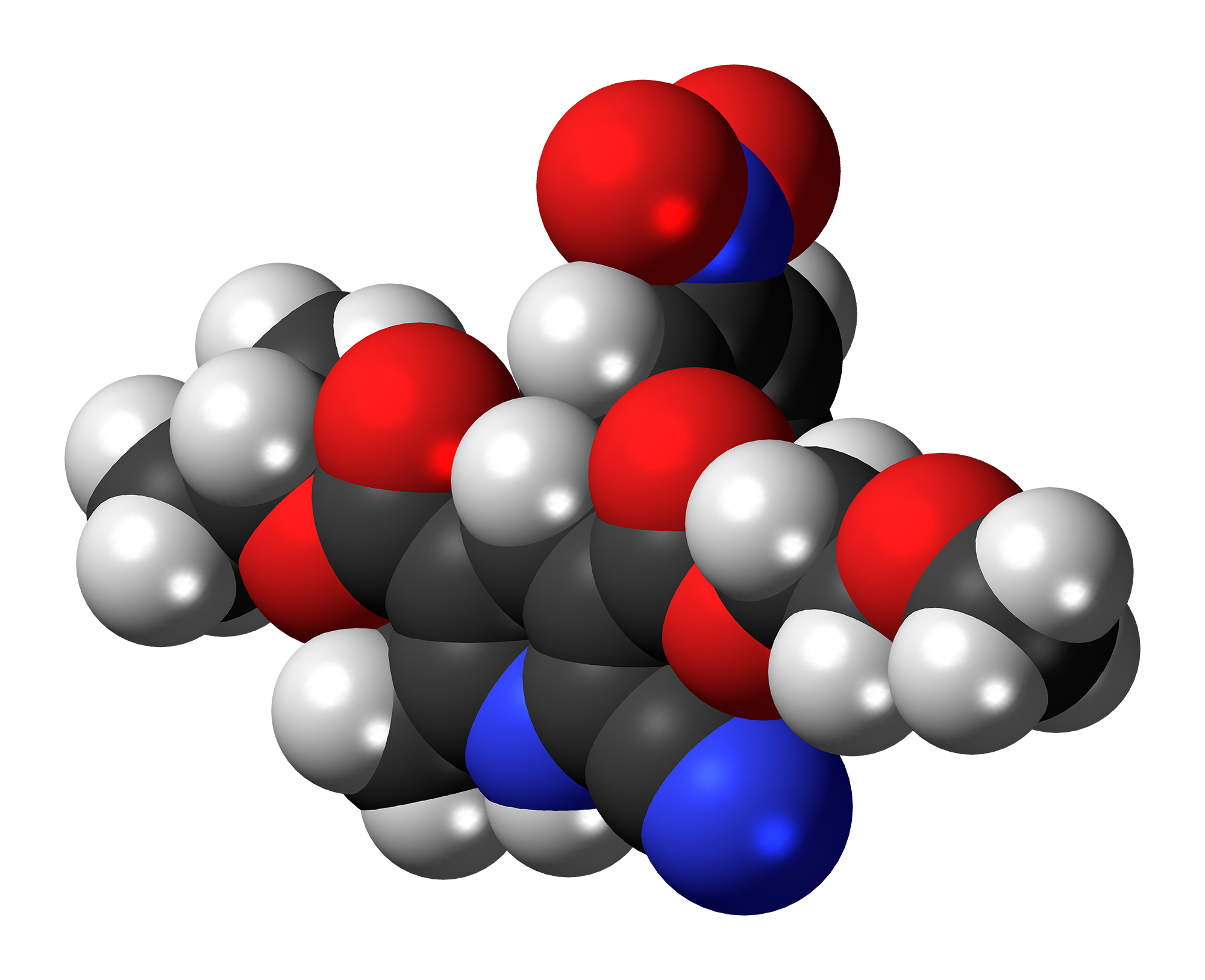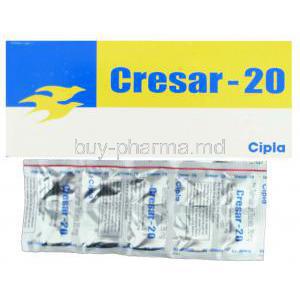Nimodipine
- I. Introduction to Nimodipine
- II. Composition of Nimodipine
- III. How Nimodipine Works
- Uses of Nimodipine
- Off-Label Uses of Nimodipine
- VI. Dosage and Administration of Nimodipine
- VII. Side Effects of Nimodipine
- VIII. Common Side Effects of Nimodipine
- IX. Interaction of Nimodipine with Other Substances
- X. Warnings and Contraindications of Nimodipine Use
- XI. Careful Administration of Nimodipine
- XII. Important Precautions When Using Nimodipine
- XIII. Administration of Nimodipine to Special Populations
- XIV. Overdose of Nimodipine
- XV. Storage and Handling Precactions for Nimodipine
I. Introduction to Nimodipine
A. Brief Overview of Nimodipine
Nimodipine is a specific calcium channel blocker belonging to the dihydropyridine class. Its primary function is to reduce resistance in the brain's blood vessels and improve blood circulation in areas affected by ischemia. It plays a crucial role in treating subarachnoid hemorrhage, a type of brain bleeding.
B. Discovery and Development History
The quest to uncover nimodipine potential began with a pressing demand for treating vasospasms after a subarachnoid hemorrhage. A known pharmaceutical company called Bayer AG brought Nimodipine into the market during the 1980s, branding it as Nimotop. Over time its application has grown due to its pharmacological attributes.
II. Composition of Nimodipine
A. Chemical Structure and Properties
Nimodipine has a structure similar to other dihydropyridine derivatives. It consists of a six-dihydropyridine ring with different chemical groups that enhance its effectiveness and selectivity. Its molecular formula, C21H26N2O7, indicates an arrangement of carbon, hydrogen, nitrogen, and oxygen atoms. These structural features give it a coloration and a crystalline form. It is soluble in alcohol but practically insoluble in water.

B. Different Forms and Preparations
Nimodipine offers a range of options for administration, showcasing its versatility. It is typically available as capsules filled with a solution usually, in a 30 mg dosage. Additionally, a concentrate solution is designed for infusion, commonly used in hospital settings.
III. How Nimodipine Works
A. Mechanism of Action in the Body
Similar to calcium channel blockers Nimodipine blocks the entry of calcium ions into the muscles of the heart and blood vessels. However, what makes it unique is its preference for blood vessels rather than cardiac muscle. By hindering the movement of calcium ions, Nimodipine prevents the narrowing of blood vessels in the brain thereby improving blood flow and oxygen supply to this organ.
B. Target Receptors and Effects
Nimodipine acts explicitly on the lasting calcium channels that are primarily present in the smooth muscle of cerebral blood vessels. When Nimodipine binds to these receptors it causes the blood vessels to expand, leading to vasodilation. This helps reduce resistance in the blood vessels and improves blood flow. As a result, ischemia is reduced, which lessens brain damage and enhances outcomes, particularly after a subarachnoid hemorrhage.
Uses of Nimodipine
Approved Uses in Medical Practice
Nimodipine is a calcium channel blocker that is prescribed to reduce the brain damage caused by a subarachnoid hemorrhage1234. It works by relaxing the blood vessels in the brain allowing blood flow to affected areas1. To ensure effectiveness it is recommended to take nimodipine on an empty stomach. Either at least 1 hour before a meal or 2 hours after one1. Typically it should be taken every 4 hours continuously for 21 days1. It is crucial to initiate nimodipine treatment soon as possible after a subarachnoid hemorrhage occurs, ideally within 96 hours1.
Here are some references for you:
- Nimodipine in subarachnoid hemorrhage - PubMed
- Subarachnoid hemorrhage - Diagnosis and treatment - Mayo Clinic
- Subarachnoid haemorrhage - NHS
- Nimodipine: MedlinePlus Drug Information
Proven Benefits in Various Health Conditions
Nimodipine is a medicine that has demonstrated its effectiveness in treating a range of health conditions including but not limited to Alzheimer’s disease1, autism1, cerebral vasospasm2, cognitive impairment1, dementia1, hypertension2134, migraine headaches214, neuroprotection21, Parkinson’s disease21, Raynaud’s phenomenon2 and subarachnoid hemorrhage2134.
Here are some references for you:
- Nimodipine Oral: Uses, Side Effects, Interactions, Pictures … - WebMD
- Nimodipine Uses, Side Effects & Warnings - Drugs.com
- Nimodipine in subarachnoid hemorrhage - PubMed
- Subarachnoid hemorrhage - Diagnosis and treatment - Mayo Clinic
Off-Label Uses of Nimodipine
Exploration of Potential Applications
Nimodipine has been studied extensively for its uses in various health conditions, including but not limited to aneurysmal subarachnoid hemorrhage (aSAH)123, atrial fibrillation (AF)4, cerebral ischemia/reperfusion injury (CIRI)4, cerebral vasospasm (CVS)4123, cognitive impairment and dementia1, hypertension (HTN)4123, migraine headaches (MH)413, Parkinson’s disease (PD)41, Raynaud’s phenomenon (RP)4 and schizophrenia4.
Here are some references for you:
- Nimodipine Oral: Uses, Side Effects, Interactions, Pictures … - WebMD
- Nimodipine Uses, Side Effects & Warnings - Drugs.com
- Nimodipine in subarachnoid hemorrhage - PubMed
- Subarachnoid hemorrhage - Diagnosis and treatment - Mayo Clinic
VI. Dosage and Administration of Nimodipine
A. Standard Dosage Guidelines
Nimodipine is usually given in the form of capsules that are taken orally. The recommended dosage is 60 mg every four hours for 21 days. It is essential to start the treatment within 96 hours after a hemorrhage to ensure it works effectively. However, individuals with hypersensitivity to nimodipine or any of its ingredients should not use this medication. Doctors may adjust the dosage depending on how the patient responds and their tolerance.
B. Variances in Dosage for Specific Patient Populations
Although the standard dosage of nimodipine is suitable for most adult patients, certain groups may need dosages. Patients with impaired kidney or liver function should be closely monitored as their plasma concentrations may increase. For patients, it is advisable to start with a lower dosage within the recommended range because they are more likely to have reduced liver, kidney, or heart function as well as other health conditions or medications being taken simultaneously.
VII. Side Effects of Nimodipine
A. Overview of Potential Side Effects
Although nimodipine has its advantages, it is essential to note that it can also come with side effects. These effects can vary in intensity. Affect different parts of the body. Some possible side effects may include blood pressure, swelling, feeling nauseous experiencing, headaches, rapid heartbeat, and discomfort in the gastrointestinal system.
B. Management and Mitigation of Side Effects
To address these side effects, doctors may modify the dosage. Suggest additional treatments. For example, if a patient experiences blood pressure (hypotension), the doctor may decrease the dose or administer fluids or vasoconstrictors. Patient education is also crucial in managing side effects, including techniques like maintaining a position to counter orthostatic hypotension and making regular dietary changes to manage gastrointestinal side effects.
VIII. Common Side Effects of Nimodipine
A. Most Frequently Reported Side Effects
Some of the side effects that are frequently mentioned by people include a decrease in blood pressure experiencing headaches feeling nauseous discomfort in the abdomen, and swelling.
B. Patient Experience and Testimonials
Patients' accounts of nimodipine offer a perspective on the potential adverse effects. Quite a few patients mention experiencing digestive issues, but they emphasize the positive impacts of the medication in enhancing neurological recovery after a subarachnoid hemorrhage. Some individuals highlight the significance of following the recommended dosage and regimen to minimize side effects. It's essential to recognize that each person's experience differs, which underscores the importance of tailored treatment and effective communication, between patients and healthcare professionals.
IX. Interaction of Nimodipine with Other Substances
A. Drug-Drug Interactions
The effectiveness of nimodipine may change when used together with substances. It is essential to be cautious when taking drugs that affect the liver enzyme CYP3A4, like ketoconazole, itraconazole, and HIV protease inhibitors. These medications can lead to an increase in the levels of nimodipine in the blood, so it's important to monitor carefully and potentially adjust the dosage. Additionally, if nimodipine is taken at the time as other calcium channel blockers or beta blockers, it could enhance the cardiovascular effects.
B. Nimodipine and Food or Alcohol Interactions
The absorption of nimodipine is not significantly affected by food. However, it is essential to monitor alcohol consumption. When alcohol is consumed at the time as nimodipine it can amplify the hypotensive effect of the medication causing significant drops, in blood pressure. Therefore individuals who are taking nimodipine should. Avoid alcohol altogether or limit their intake carefully.
X. Warnings and Contraindications of Nimodipine Use
A. Specific Patient Groups at Risk
Certain groups of patients need to be more careful when thinking about using nimodipine treatment. These groups include patients with heart problems, low blood pressure, or severe brain swelling, or increased pressure, inside the skull. These individuals have a chance of their condition getting worse so it's essential to keep a close eye on them and monitor their progress closely.
B. Health Conditions that Prohibit Nimodipine Use
Some health conditions may make it inappropriate to use nimodipine. These include patients who have a reaction to nimodipine or other dihydropyridines, as well as individuals who have recently experienced a cerebral hemorrhage or a heart attack within the past month.
XI. Careful Administration of Nimodipine
A. Considerations for Safe Use
To ensure the proper use of nimodipine it is crucial to follow the prescribed dosing schedules regularly check your blood pressure and immediately report any side effects you may experience. Additionally it is important not to try to make up for a missed dose by taking a dose afterwards. Avoid stopping nimodipine treatment as this could result in a rebound effect that may lead to sudden cardiovascular events.
B. Professional Guidelines for Administration
From this point of view, when administering nimodipine, it is essential to carefully review the patient's medical history to exclude any conditions that may prevent its use. Regular monitoring of the patient is necessary. Attention should be given to potential interactions with other medications. Additionally, patients should be educated about how to take nimodipine and be made aware of possible side effects. It is recommended to start nimodipine immediately after diagnosing subarachnoid bleeding within 96 hours of the symptoms and continue the treatment for 21 days.
XII. Important Precautions When Using Nimodipine
A. Preemptive Measures to Enhance Safety
Before starting nimodipine treatment, patients must let their healthcare provider know about any medications or supplements they take to avoid any possible interactions. It is also necessary to monitor blood pressure to prevent low blood pressure. Since nimodipine can cause dizziness, it is recommended to exercise caution while driving or operating machinery.
B. Necessary Lifestyle Adjustments
When using nimodipine, you must make some lifestyle changes to get the results from your treatment. This involves eating a diet cutting down on alcohol to lower the chances of low blood pressure, and avoiding smoking since it can interfere with how the medication works. Regular exercise with guidance from a healthcare professional can also improve your well-being.
XIII. Administration of Nimodipine to Special Populations
A. Nimodipine Use in the Elderly
Elderly individuals might exhibit increased sensitivity to the impacts of nimodipine and its hypotensive effects. As a result, it is advisable to administer the dosage, typically beginning with the lower end of the recommended range.
B. Nimodipine Administration to Pregnant Women and Nursing Mothers
Nimodipine should only be taken while pregnant if the benefits outweigh the risks to the baby. We are unsure if nimodipine is passed through breast milk. Considering the possible effects on nursing infants, it is crucial to decide whether to stop breastfeeding or stop taking the medication, keeping in mind how important the drug is for the mother.
C. Nimodipine Use in Pediatric Patients
The use of nimodipine in patients has not been proven to be safe and effective. As a result, it should be approached cautiously and only considered when the benefits clearly outweigh the potential risks.
XIV. Overdose of Nimodipine
A. Signs and Symptoms of Overdose
Overdosing on nimodipine can cause a drop in blood pressure resulting in symptoms like feeling lightheaded, passing out, and having a fast and weak pulse. It can also lead to an increased heart rate as a response and, in severe situations, a complete cardiovascular breakdown.

B. Emergency Response and Treatment Options
If someone takes much nimodipine, seeking medical help is crucial. The usual approach to treatment involves providing support and taking steps to normalize blood pressure while addressing any complications that may arise. In some cases, doctors may consider lavage if the person comes for assistance soon after swallowing the medication.
XV. Storage and Handling Precactions for Nimodipine
A. Proper Storage Conditions
Store nimodipine at room temperature, avoiding exposure to light and moisture. Ensure not to keep it in the bathroom or expose it to temperatures, as this could affect its effectiveness.
B. Precautions for Safe Handling and Disposal
When dealing with nimodipine, avoid any contact with your skin or eyes because it can be absorbed through these surfaces. If by chance there is contact, ensure that you thoroughly rinse the affected area with water. To prevent contamination, it is essential to dispose of expired or unused nimodipine, following the regulations set by your local authorities.
Nimodipine FAQ
- What are the side effects of Nimodipine?
- Can you explain Nimodipine's mechanism of action?
- What are the uses of Nimodipine?
- Which drug class does Nimodipine belong to?
- How is Nimodipine used in cases of subarachnoid hemorrhage?
- What is the usual dose of Nimodipine?
- How is Nimodipine used for subarachnoid hemorrhage (SAH)?
- What is the appropriate dosage of Nimodipine?
- What is the brand name for Nimodipine?
- How much does Nimodipine cost?
- What is Nimodipine?
- What is the price of Nimodipine?
- How is Nimodipine used in subarachnoid hemorrhage (SAH)?
- How does Nimodipine compare to Nicardipine?
- Can you tell me about the Nimodipine capsule?
- How is Nimodipine used for subarachnoid hemorrhage (SAH)?
- What is the role of Nimodipine in stroke treatment?
- How is Nimodipine used in stroke?
- Can you describe Nimodipine capsules?
- Can Nimodipine be administered intravenously (IV)?
- What are the contraindications for Nimodipine?
- What is Nimodipine used for?
- Can you tell me about Nimodipine oral solution?
- What are the subarachnoid hemorrhage (SAH) guidelines for Nimodipine use?
- Are there any interactions with Nimodipine?
- Does Nimodipine lower blood pressure?
- How is Nimodipine used for traumatic subarachnoid hemorrhage (SAH)?
- Is Nimodipine used for cerebral vasospasm?
- How does Nimodipine compare to Amlodipine?
- How is Nimodipine used for traumatic subarachnoid hemorrhage (SAH)?
- What are the warnings associated with Nimodipine?
- What is Nimotop, in relation to Nimodipine?
- What are the indications for Nimodipine?
- How is Nimodipine used in traumatic subarachnoid hemorrhage (SAH)?
- What is the generic name for Nimodipine?
- How does Nimodipine treat cerebral vasospasm?
- Is Nimodipine a calcium channel blocker?
- Can Nimodipine cause bradycardia?
- What are alternatives to Nimodipine?
- Why is Nimodipine used for subarachnoid hemorrhage (SAH)?
- How much does Nimodipine cost?
- What is the difference between Nimodipine and Nicardipine?
- How do Nimodipine and Nifedipine compare in the treatment of subarachnoid hemorrhage?
- Can you describe Nimodipine liquid?
- How do Nimodipine IV and oral forms compare?
- Can Nimodipine and Amlodipine be used in combination?
- Can you tell me about Nimodipine tablets?
- How does Nimodipine work in traumatic subarachnoid hemorrhage?
- What are the uses of Nimodipine tablets?
- What is Nimodipine tablets IP 30 mg?
- How is Nimodipine used in subarachnoid hemorrhage?
- What is a Nimodipine vial?
- Can you describe the structure of Nimodipine?
- What is Nimodipine sigma?
- Can you tell me about Nimodipine solution?
- How is Nimodipine used in non-aneurysmal subarachnoid hemorrhage?
- What is the use of Nimodipine injection?
- Is Nimodipine safe in pregnancy?
- Can you explain the pharmacokinetics of Nimodipine?
- What is the price of Nimodipine in the Philippines?
- Can Nimodipine be bought over the counter?
- What is Nimodipine medication?
- What is the role of Nimodipine in ME/CFS?
- What is the mechanism of action of Nimodipine in SAH?
- Is Nimodipine used for migraines?
- Can Nimodipine cause hypotension?
- What is the equivalent of Nimodipine?
- What is the dose of Nimodipine for vasospasm?
- What is the dose of Nimodipine in subarachnoid hemorrhage?
- What is the dose of Nimodipine in hypertension?
- What is Nimodipine CCB?
- What is Nimodipine CFS?
- Can you tell me about Nimodipine capsules 30 mg?
- What is Nimodipine BNF?
- Who manufactures Nimodipine?
- What is the action of Nimodipine?
- Is there a coupon for Nimodipine?
- When should Nimodipine be given?
- What is Nimodipine for?
- Can Nimodipine cause low blood pressure?
- Can Nimodipine cause bradycardia?
- Can Nimodipine capsules be opened?



















